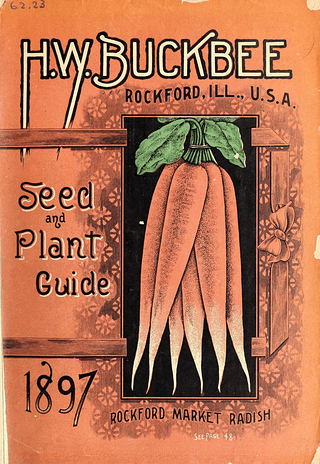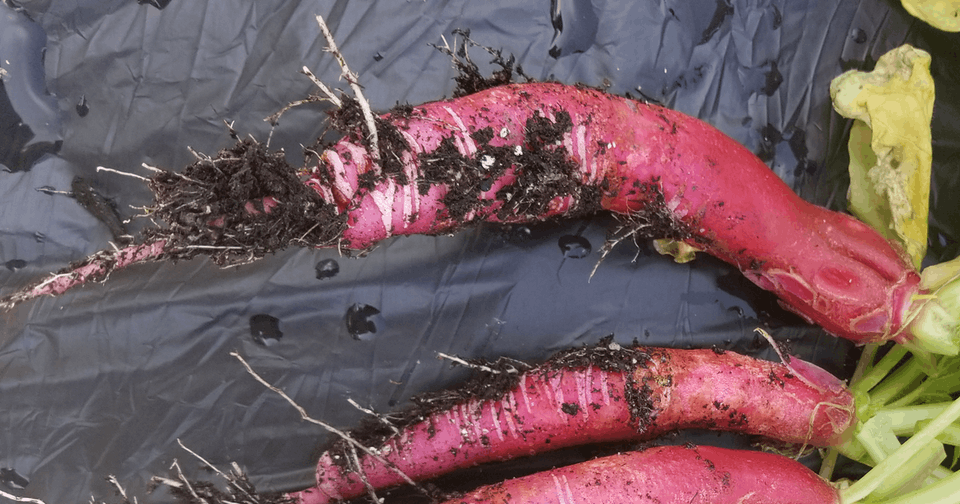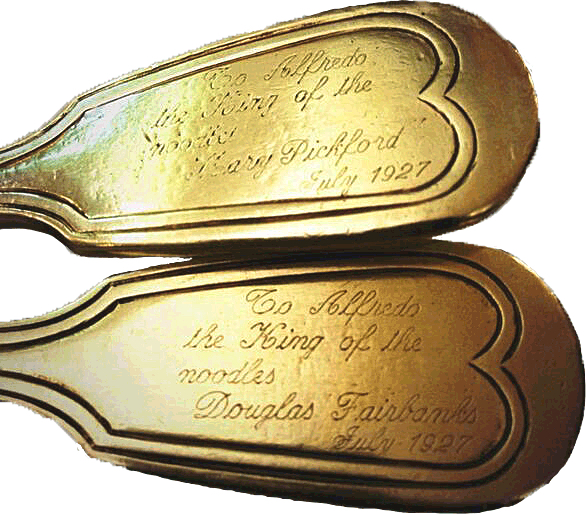- Politico’s Morning Agriculture gives details of the US government’s subsidies to farmers, likely to total more than $21 billion in 2019. The average for the past 10 years is $11.5 billion a year.
- Academics brought together “major players” from the agriculture and fisheries industries to gauge their post-Brexit priorities.
- Geoff Tansey published a blog post about Resilience in the UK food system, which reports on a meeting this month in Edinburgh.
- After all that wonkery, enjoy some thoughts from Cynthia Bertelsen on rice and Spain and the movement of peoples and their foods.
Radish redux One man's search for a mythic vegetable variety

Podcast: Play in new window | Download (Duration: 16:49 — 13.7MB)
Subscribe: Google Podcasts | Spotify | Android | RSS | More
 Earlier this summer, I learned about a talk at the annual conference of the American Society for Horticultural Science. The press release said it “holds all the intrigue of a murder mystery and all the painstaking, arduous pursuit of an archeological dig, along with a touch of serendipity”. And it concerned the rediscovery of a kind of radish that in its day was extremely famous. My kind of mystery. Naturally I had to talk to the sleuth cum Indiana Jones, Dr Gary Bachmann. Before I did so, though, I did a bit of digging of my own so that I’d be able to contribute a clue myself.
Earlier this summer, I learned about a talk at the annual conference of the American Society for Horticultural Science. The press release said it “holds all the intrigue of a murder mystery and all the painstaking, arduous pursuit of an archeological dig, along with a touch of serendipity”. And it concerned the rediscovery of a kind of radish that in its day was extremely famous. My kind of mystery. Naturally I had to talk to the sleuth cum Indiana Jones, Dr Gary Bachmann. Before I did so, though, I did a bit of digging of my own so that I’d be able to contribute a clue myself.
The rediscovery of the radish that put Long Beach, Mississippi, on the map raises all kinds of questions for vegetable sleuths, amateur and professional. Can you identify a variety beyond reasonable doubt? Does that even matter, if the culprit matches the suspect closely enough? And how many radishes would fill a boxcar?

Notes
- There are a few suppliers of Cincinnati Market radish out there, plus just about every combination of the words long, scarlet, cincinnati and radish. I’d get it from the US National Plant Germplasm System, but like I said, I’m a bit obsessive about these things.
- Photo of the radish itself from Gary Bachmann.
- Resurrecting lost vegetables is not restricted to keen gardeners. Local communities do it too, recovering varieties that they gave to genebanks and later lost. And genebanks work with other genebanks in search of national varieties that they may have lost. During his time at the Nordic Genebank, Svein Solberg’s team repatriated 329 varieties from the Vavilov genebank in Russia.
- Music by Black Keys Bob Stevenson. I have no idea who Black Keys Bob Stevenson is, but I thank him and the Internet Archive.
Antibiotic resistance in livestock: high and growing In memoriam Stuart B. Levy

The introduction to a new report about livestock antibiotic resistance in Science states unequivocally that “There is a clear increase in the number of resistant bacterial strains occurring in chickens and pigs.” It also, somewhat disingenuously in my view, says “It is unclear what the increase in demand for antibiotics means for the occurrence of drug resistance in animals and risk to humans.”
It has been clear almost since the first deployment of antibiotics that resistance to them evolves, and that the more antibiotics are used, the more resistance we can expect. I well remember, back in 1982, Stuart Levy warning me and anyone else who would listen that the world was already a dilute solution of Tetracycline. Levy died earlier this month, and yesterday’s Washington Post carried a very good obituary. It gives the background to his ground-breaking research, published in 1976, that the routine use of antibiotics on a chicken farm resulted in resistant bacteria in people who lived nearby. I can imagine what he might say to this conclusion from this latest report:
Globally, 73% of all antimicrobials sold on Earth are used in animals raised for food. A growing body of evidence has linked this practice with the rise of antimicrobial-resistant infections, not just in animals but also in humans. Beyond potentially serious consequences for public health, the reliance on antimicrobials to meet demand for animal protein is a likely threat to the sustainability of the livestock industry, and thus to the livelihood of farmers around the world.
Little-known fact: Levy’s original study was funded by the Animal Health Institute, who hoped his results would support their view that routine antibiotics were useful and effective with no downside risks. As the Post’s obituary notes:
“Our study from 1976 was [and still is] the only prospective U.S. study on this, and industry didn’t want more studies,” Dr. Levy told the Scientist magazine in 2015. “They were upset that our data showed them to be wrong. This was highly political.”
Amen.
Eat This Podcast’s episode Antibiotics and agriculture examined this history of antibiotics on farms and one possible solution.
Eat This Newsletter 108
An opportunity to change food for the better
These are the links behind the piece. Only the last two are recent. For what I think follows, you can read Eat This Newsletter 108 online. Please feel to subscribe, too.
- Latest Yellowhammer Planning Assumptions
- Food and Brexit: will our cupboards be bare?
- What (And Why) I’m Stockpiling For Brexit by Jack Monroe
- Brexit and after: that was the revolution that was
- Farming post Brexit
- $1m a minute: the farming subsidies destroying the world, which is about
- Global report – Food and Land Use Coalition
When in Rome An eternal story of mythic history

Podcast: Play in new window | Download (Duration: 24:49 — 20.0MB)
Subscribe: Google Podcasts | Spotify | Android | RSS | More
 According to Virgil, Rome owes its existence to a food-based prophesy that persuaded Aeneas that this was indeed the place for the weary Trojans to make a new home. And according to the proprietors of both of the restaurants that claim to serve the original, authentic fettucine Alfredo, Alfredo himself invented the dish in the 1920s.
According to Virgil, Rome owes its existence to a food-based prophesy that persuaded Aeneas that this was indeed the place for the weary Trojans to make a new home. And according to the proprietors of both of the restaurants that claim to serve the original, authentic fettucine Alfredo, Alfredo himself invented the dish in the 1920s.
In her new book, Karima Moyer-Nocchi examines The Eternal Table from Aeneas to Alfredo, and about all one can conclude is that from the very beginning Rome, like everywhere else, has been subject to waves of fashion, innovation and conservatism.

Pasta Alfredo offers a perfect example. The cutlery in the banner photograph and those in this image illustrate the unreal history of the dish. One contains the original inscription, one does not. One is original, one is not. Which is which?
Notes
- Karima Moyer-Nocchi’s website is The Eternal Table.
- Thanks to the Victoria & Albert Museum for the little bit of music in the middle.
- There’s an awful lot of Alfredo stuff on YouTube, but this is the one Karima mentioned in the episode.
